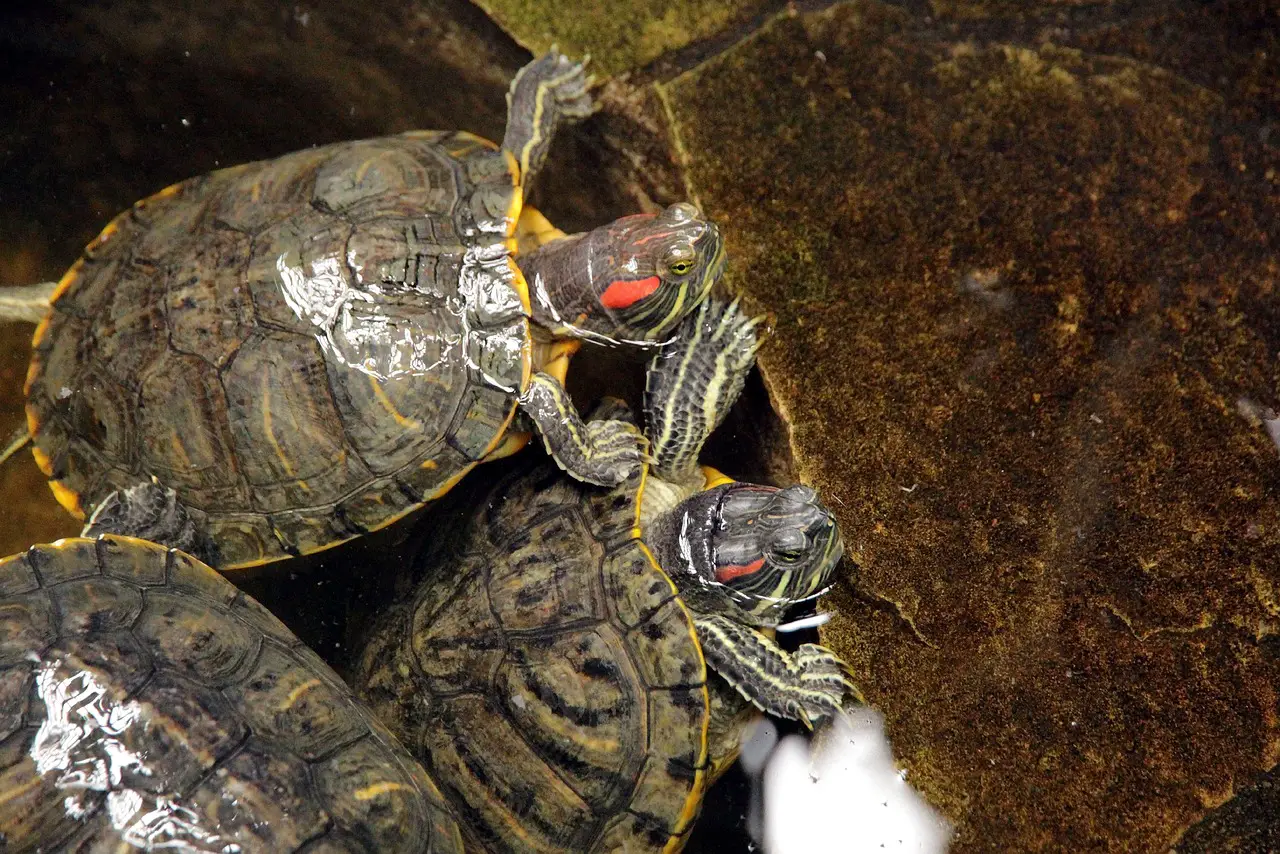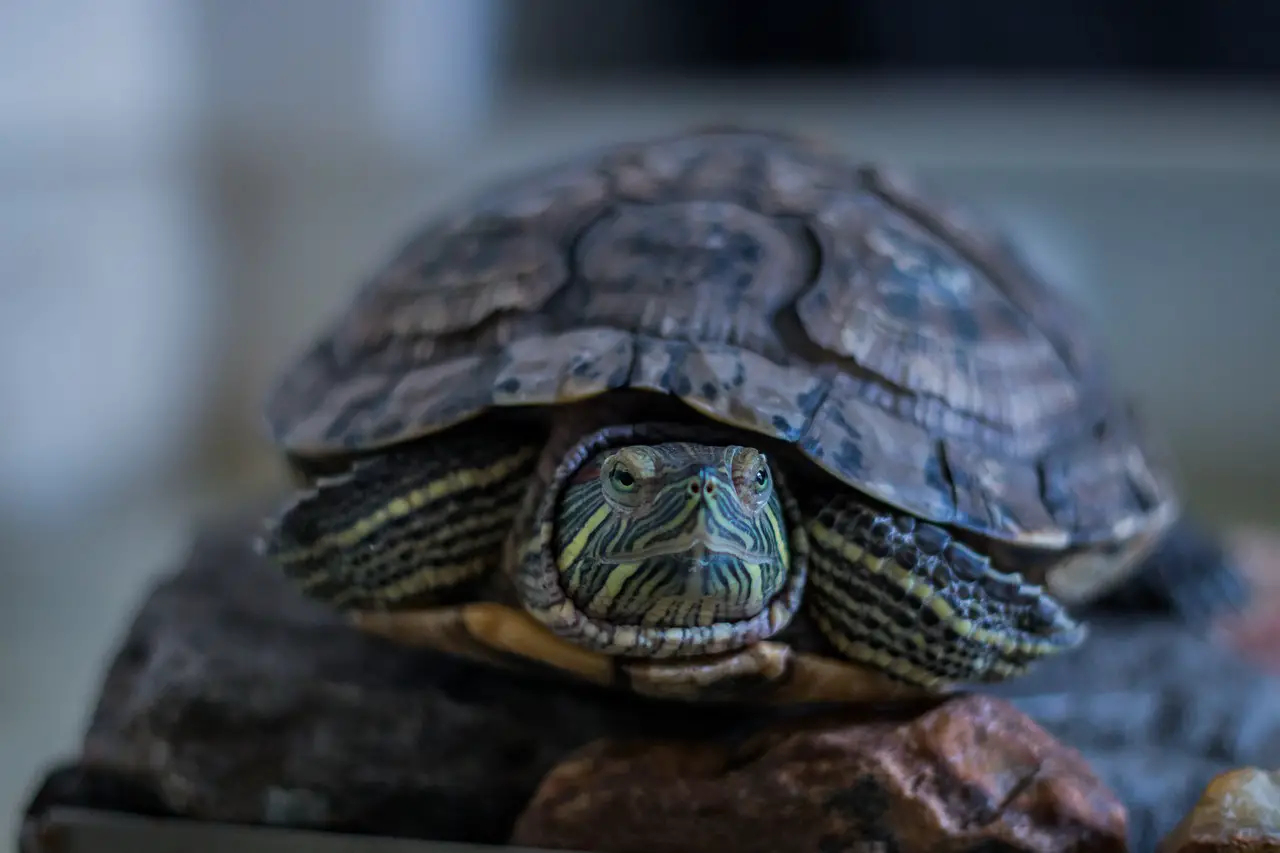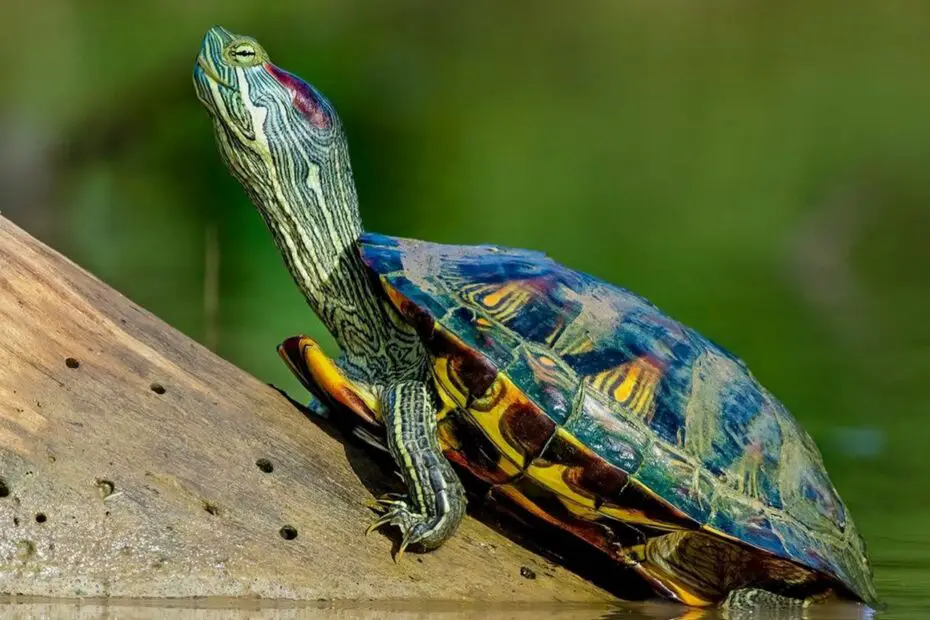Red-eared slider turtles are popular and fascinating pets that require a suitable tank environment to thrive. Providing a well-designed tank will ensure the health and happiness of your pet. In this article, we will guide you on creating the perfect Red-Eared Slider Turtle Tank, from selecting the right tank to setting up the ideal conditions.
You may also want to read about their lifespan.
Selecting the Right Red-Eared Slider Turtle Tank
Tank Size and Capacity
Red-eared slider turtles can grow quite large, so it’s crucial to choose an appropriately sized tank. A general rule of thumb is to have 10 gallons of water capacity per inch of the turtle’s shell length. For example, if your turtle is 4 inches long, a 40-gallon tank would be suitable. Consider the potential size of your turtle when selecting the tank to ensure they have enough space to swim and move comfortably.
Tank Material and Shape
Glass or acrylic tanks are commonly used for red-eared slider turtles. Both materials provide good visibility and are easy to clean. Make sure the tank is sturdy and free from any cracks or leaks. As for the shape, opt for a rectangular tank rather than a round or hexagonal one. Rectangular tanks offer more swimming space and allow for better placement of accessories.

Essential Equipment for the Turtle Tank
Filtration System
A proper filtration system is crucial to maintain clean and healthy water for your red-eared slider turtle. Invest in a reliable filtration system that can handle the tank’s water capacity. A combination of mechanical, biological, and chemical filtration is recommended. Regularly clean or replace the filter media to ensure optimal performance.
Heating and Lighting
Red-eared slider turtles are ectothermic, meaning they rely on external heat sources to regulate their body temperature. Provide a heat source such as a basking lamp or ceramic heat emitter to create a warm basking spot in the tank. Use a thermometer to monitor the temperature and adjust the heat source accordingly. Additionally, UVB lighting is essential for the turtle’s shell and overall health. Install a UVB bulb that covers the required spectrum and replace it as recommended by the manufacturer.
Thermometer and Hygrometer
Monitoring the temperature and humidity levels in the turtle tank is crucial. Place a thermometer and hygrometer in the tank to ensure the temperature ranges between 75-85°F (24-29°C) and the humidity is around 50-70%. Adjust the heat source and ventilation accordingly to maintain optimal conditions.
Substrate and Decorations
Choose a suitable substrate for the tank bottom. River rocks or large aquarium gravel are often used, as they are easy to clean and do not pose a choking hazard to the turtle. Provide ample hiding spots and enrichment by adding driftwood, rocks, and live or artificial plants. Ensure that all decorations are safe and free from sharp edges or toxins.
Setting Up the Ideal Habitat
Water Conditions
Maintaining clean and chemically balanced water is essential for the health of your red-eared slider turtle. Use a dechlorinator to remove any harmful chemicals from tap water before filling the tank. Regularly test the water parameters, including pH, ammonia, nitrite, and nitrate levels. The water temperature should be regulated within the recommended range.

Basking Area
Red-eared slider turtles require a dry basking area where they can climb out of the water and rest. Create a platform using a large rock, a commercially available turtle dock, or a custom-made basking platform. Ensure that the basking area is sturdy, stable, and large enough to accommodate the turtle comfortably. Position the basking spot under the heat source and provide a UVB lamp above it.
Red-Eared Slider Turtle Tank: Maintaining the Tank
Cleaning and Water Changes
Regular maintenance and cleaning are necessary to keep the turtle tank in optimal condition. Perform partial water changes of about 25-50% every 1-2 weeks, depending on the tank size and stocking level. Use a siphon or a dedicated aquarium gravel cleaner to remove debris and waste from the substrate. Clean the tank accessories, such as rocks and decorations, regularly.
Feeding and Nutrition
A well-balanced diet is essential for the health and growth of your red-eared slider turtle. Offer a variety of foods, including commercial turtle pellets, leafy greens, vegetables, and occasional protein sources like insects or fish. Feed them in the water to stimulate natural feeding behavior and ensure they receive the required nutrients.
Monitoring Health
Regularly observe your red-eared slider turtle for any signs of illness or distress. Look for abnormal behavior, changes in appetite, shell abnormalities, or respiratory issues. If you notice any concerning symptoms, consult a reptile veterinarian experienced in treating turtles.
Conclusion
Creating a suitable tank environment for your red-eared slider turtle is crucial for their well-being. Remember to select an adequately sized tank, provide essential equipment such as filtration, heating, and lighting systems, and set up a balanced habitat with proper water conditions and a basking area. Regular maintenance, feeding a nutritious diet, and monitoring their health will ensure a happy and healthy pet.
FAQs
- Can red-eared slider turtles live in a small tank?
- Red-eared slider turtles need a spacious tank to thrive. A small tank can hinder their growth and lead to health issues.
- How often should I change the water in the turtle tank?
- Partial water changes of 25-50% should be done every 1-2 weeks to maintain water quality.
- Can I use tap water for my turtle’s tank?
- Tap water should be treated to remove chlorine and other chemicals before adding it to the turtle’s tank. Use a reptile-safe water conditioner.
- Do red-eared slider turtles need a UVB light?
- Yes, red-eared slider turtles require UVB lighting to metabolize calcium and maintain a healthy shell.
- What should I do if my turtle refuses to eat?
- Monitor your turtle’s behavior and consult a veterinarian if the lack of appetite persists. Dietary changes or health issues could be contributing factors.
